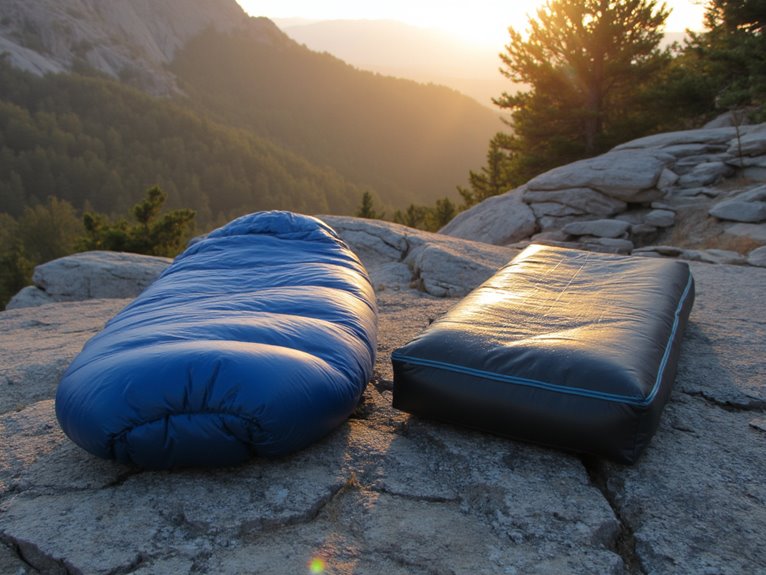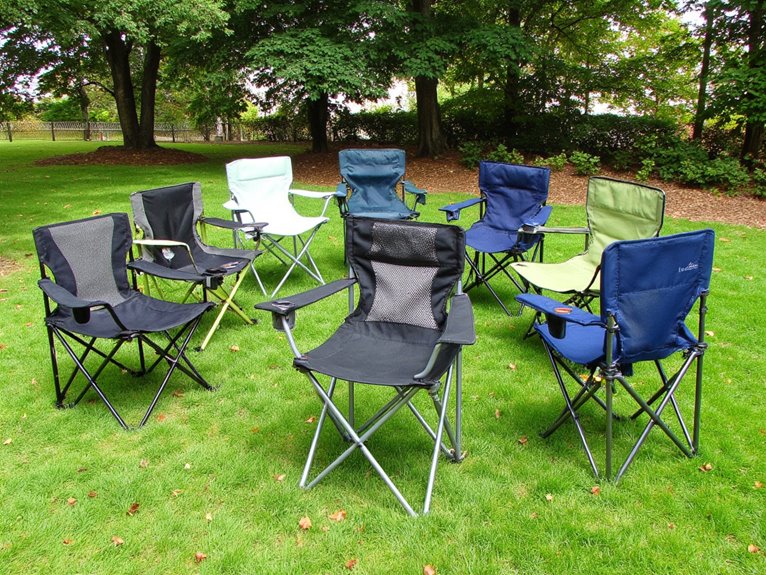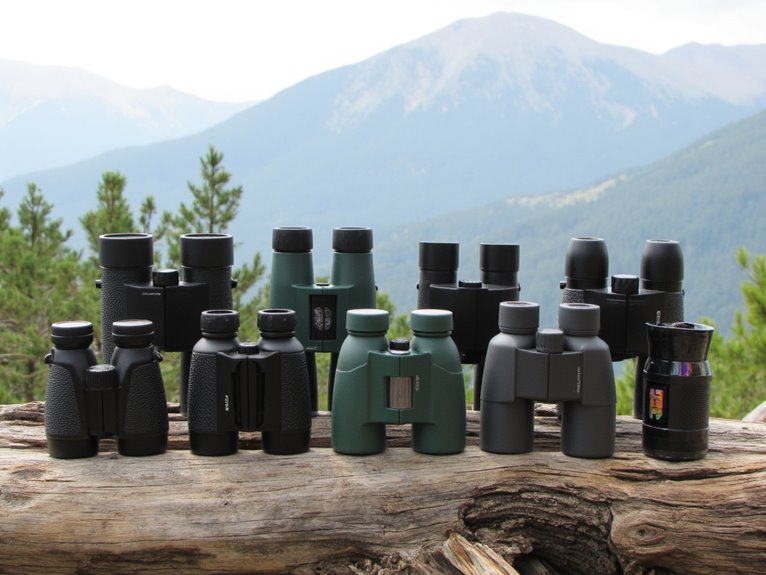Do You Need a Sleeping Pad If You Have a Sleeping Bag?
You absolutely need a sleeping pad with your sleeping bag because ground contact can steal up to 50% of your body heat through conduction, even with the warmest bag. Sleeping bag temperature ratings assume you’re using an insulated pad with an R-value around 5.5, not sleeping directly on cold ground. Without proper ground insulation, your bag’s fill compresses against the earth, creating thermal sinks that dramatically reduce warmth. Understanding R-values and proper pad selection transforms your outdoor comfort completely.
We are supported by our audience. When you purchase through links on our site, we may earn an affiliate commission, at no extra cost for you. Learn more. Last update on 4th December 2025 / Images from Amazon Product Advertising API.
Notable Insights
- Yes, you need a sleeping pad because sleeping bags assume use with an insulated pad for their temperature ratings.
- Without a sleeping pad, ground conduction can pull away up to 50% of your body heat through direct contact.
- Ground contact compresses sleeping bag insulation underneath you, creating thermal sinks that significantly reduce warmth and comfort.
- Sleeping pads provide essential thermal resistance (R-value) that prevents cold transfer from the ground to your body.
- The sleeping bag and pad work as an integrated system—neither component alone provides optimal warmth and comfort.
How Sleeping Bags and Sleeping Pads Work Together
When you’re planning an overnight trip, your sleeping bag and sleeping pad don’t work as separate pieces of gear—they form an integrated sleep system that determines your warmth and comfort throughout the night.
This sleeping system integration includes your bag, pad, and clothing working together to maintain body heat. Your sleeping bag’s temperature rating assumes you’ll use an insulated pad with an R-value around 5.5.
Without adequate pad insulation, cold transfers directly from the ground, compromising your bag’s effectiveness. Warmth optimization requires matching your pad’s R-value to your bag’s rating and expected conditions.
Variables like humidity, wind, ground type, and personal preferences affect system performance, making proper component selection critical for maintaining warmth throughout your sleep. The type of insulation material in your sleeping bag—whether down, synthetic, or hybrid—also influences how well your sleep system performs in different moisture conditions.
The Science Behind Ground Insulation and Heat Loss
When you lie on the ground without a sleeping pad, your body loses heat through direct conduction—the transfer of thermal energy from your warmer body to the colder earth beneath you.
This heat loss occurs because the ground maintains temperatures markedly lower than your core body temperature of 98.6°F, even during summer months when surface soil rarely exceeds 70°F.
The effectiveness of any ground insulation system depends on its R-value, a standardized measurement following ASTM F3340 testing protocols that quantifies thermal resistance on a scale where higher numbers indicate better insulation performance.
Ground contact also compresses your sleeping bag’s insulation, creating a thermal sink that dramatically reduces the bag’s ability to trap warm air and maintain your body temperature throughout the night.
Conductive Heat Transfer Mechanics
Understanding heat transfer mechanisms reveals why sleeping pads aren’t just luxury gear—they’re essential thermal equipment. Your body loses heat through three primary pathways: conduction, convection, and radiation. Conductive heat transfer occurs when your body directly contacts colder surfaces like the ground, which can pull away up to 50% of your body heat.
| Heat Transfer Method | Heat Loss Percentage | Primary Source | Mitigation Strategy |
|---|---|---|---|
| Conduction | Up to 50% | Ground contact | Sleeping pad |
| Convection | 30-40% | Air movement | Wind barriers |
| Radiation | 10-20% | Heat emission | Reflective materials |
| Evaporation | 5-15% | Moisture loss | Vapor barriers |
Different insulation materials provide varying thermal resistance. Closed-cell foam offers consistent protection, while inflatable pads provide adjustable insulation levels. Combined systems maximize thermal efficiency against conductive heat loss.
R-Value Measurement Standards
The R-value provides a standardized measurement of thermal resistance that determines how effectively your sleeping pad prevents heat loss to the ground.
The ASTM F3340-18/22 standard establishes uniform testing protocols across the industry. This standardized testing uses specific equipment and procedures to guarantee accurate R-value ratings you can trust.
Before this standard, manufacturers used different testing methods, creating inconsistent ratings. Now, brands like Therm-a-Rest adopt the ASTM protocol for reliable comparisons. The R value implications are significant—you can directly compare different pads’ insulation capabilities regardless of brand or construction type.
Testing involves controlled laboratory conditions with precise temperature measurements. This protocol measures actual thermal resistance rather than estimated values.
The international application of ASTM F3340 means consistent ratings worldwide, eliminating confusion when selecting gear for specific temperature conditions.
When a Sleeping Bag Alone Isn’t Enough
Although sleeping bags provide excellent upper-body insulation, they can’t address the fundamental problem of heat loss through ground contact.
Even premium sleeping bags fail to prevent conductive heat transfer to cold surfaces beneath you. Your body loses significant warmth through direct ground contact, compromising sleeping bag comfort and temperature regulation.
Premium sleeping bags cannot stop your body from losing critical heat through direct contact with cold ground surfaces below.
Critical limitations include:
- Ground conduction bypasses sleeping bag insulation entirely
- Moisture seepage through bottom fabric reduces warmth retention
- Hard surfaces create pressure points that disrupt sleep quality
- Uneven terrain compromises proper sleeping bag loft
- Cold weather conditions overwhelm single-layer protection systems
Your sleeping bag’s bottom compression under body weight eliminates air pockets that provide insulation.
This creates a thermal bridge where cold transfers directly from ground to body, making even high-rated sleeping bags insufficient for comfortable outdoor sleeping without additional barrier protection.
A sleeping pad with an R-value between 4.0-9.5 provides the essential insulation barrier needed to prevent this heat loss and maintain warmth throughout the night.
Choosing the Right Sleeping Pad for Your Needs
Selecting your sleeping pad requires matching specific design features to your intended use and personal comfort priorities.
Car campers should prioritize thick air pads or self-inflating models for maximum comfort. Backpackers need lightweight air pads under one pound that pack to Nalgene bottle size. Thru-hikers benefit from closed-cell foam’s indestructible reliability despite minimal cushioning. Winter campers require high R-value insulation regardless of pad type.
Your comfort preferences determine sleeping pad types selection. Side sleepers need air pads over two inches thick for pressure point relief. Stomach sleepers can use thinner self-inflating pads with moderate cushioning.
Consider puncture risk versus comfort trade-offs. Air pads offer superior thickness but require patch kits. Self-inflating pads provide puncture resistance through internal foam. Closed-cell foam eliminates deflation concerns entirely while sacrificing comfort.
The R-value rating determines thermal insulation effectiveness, with R-2 suitable for summer conditions and R-4 or higher necessary for winter camping.
R-Value and Temperature Rating Considerations
When evaluating sleeping pads, R-value serves as the critical metric determining your pad’s thermal performance against cold ground. The R value impact directly correlates with your sleep system’s effectiveness, making proper selection crucial for comfort and safety.
R-value determines your sleeping pad’s ability to insulate against cold ground, directly impacting your overall sleep system performance and safety.
Understanding temperature ratings requires matching your sleeping bag’s rating with appropriate pad insulation. Bag manufacturers assume specific R-values during testing, typically R-5.5 for winter ratings.
Key R-value and temperature combinations include:
- R-value 2 or lower: Warm nights above 50°F with 30°F-rated bags
- R-value 2-3.9: Cool conditions around 32°F with 20°F-rated bags
- R-value 4-5.4: Cold weather near 20°F with 15°F-rated bags
- R-value 5.5+: Winter conditions at 0°F with 0°F-rated bags
Mismatched pairings compromise thermal performance regardless of bag quality.
Most experts recommend adding 25-30°F to manufacturer temperature ratings for realistic comfort expectations when planning your sleep system.
Proper alignment prevents hypothermia risk and guarantees ideal warmth retention throughout the night.
Backpacking Vs Car Camping: Different Pad Requirements
Your choice between backpacking and car camping fundamentally determines which sleeping pad specifications you’ll need to prioritize.
Backpacking pads emphasize weight and packability above all else. You’ll want air pads or ultralight self-inflating models that compress small and weigh under two pounds. R-values between 2-4 suffice for most conditions, though you’ll pay premium prices for lightweight materials.
Car camping pads prioritize comfort over portability constraints. You can choose thicker self-inflating pads or luxurious air mattresses without weight penalties. Higher R-values above 5 become practical options for cold-weather camping. These pads offer larger dimensions, built-in pillows, and enhanced cushioning features. Pads with 4-5 inches of thickness are recommended for optimal support and comfort when weight isn’t a limiting factor.
Budget ranges expand considerably since weight isn’t limiting your choices. Storage in your vehicle eliminates packability concerns entirely.
Proper Setup and Placement for Maximum Warmth
Position your pad directly underneath your sleeping bag, never on top. Ground contact creates the largest heat loss without proper insulation. Different pad types require specific placement considerations—closed-cell foam pads need smooth ground surfaces, while air pads work on uneven terrain.
Essential setup techniques for maximum warmth:
- Center your body within the bag to prevent compression against sides
- Tighten hood and collar drawstrings to seal heat escape points
- Pull knees slightly toward chest for improved core warmth retention
- Layer pads when temperatures drop below your system’s rating
- Place reflective emergency blankets between pad and bag for heat reflection
Sleeping bag features like draft collars only function properly when combined with adequate ground insulation. When selecting your sleeping pad, consider the R-value rating which ranges from 1-8 and determines thermal efficiency for different temperature conditions.



